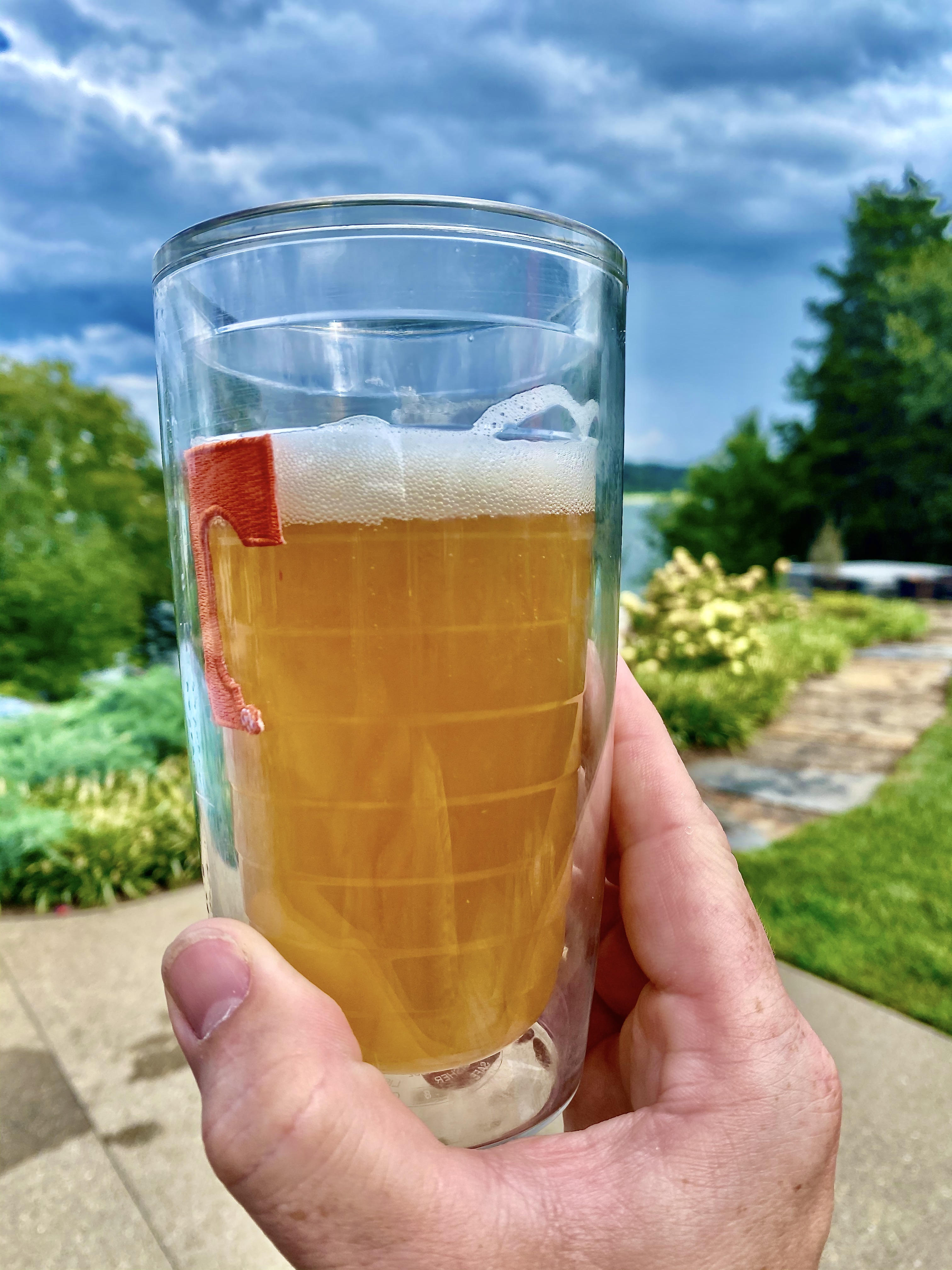It's always confusing when using metric and imperial at the same time.

So with 100g (3.5oz) g T90 and 100g (3.5oz) cryo I dry hop the equivalent of 300g (10.5oz) T90 in 19l (5gal) which is about 16g/l (2.1oz/gal). This is what Cloudwater uses for their DDH pale ales, so I guess I should call it more a DDH pale ale or a DDH session ipa then.

The aroma is definitely bursting out of the glass, but the beer is drinking very smoothly and there's no polyphenol astringency to speak of.
I wanted to test a bit what the limits are for dry hopping a pale ale, as one hears from a lot of brewers that the lower alcohol and perceived sweetness of a pale ale, makes it only handle a max amount of dry hop load compared to IPAs and DIPAs.
10.5 oz dry hop for 5gal of a 5.5% ABV beer is definitely overkill, and you can for sure do with less. But I am just happy to see that even at such high dry hopping rates you prevent a lot of polyphenol astringency by using the right techniques.
The problem here in Europe is that usually the smallest packages for hops are 100g (3.5oz).
I only dry hop with freshly opened hop bags, so often I need to work in increments of 3.5 oz when dry hopping. I could of course always use half a bag, vacuum seal it and then use it in the whirlpool for the next brew.
Luckily I just found a webshop here in Europe which sells 50g (1.75oz) bags of hops and they seem to be decently flushed, so I will be able to trim more the amounts of my dry hops.
Anyway, I think this discussion is actually more suited for the Northeast style IPA thread, but I was frustrated like Steven Barrett for more than a year in that I could never get enough hop aroma and flavour into my beers without a lot of polyphenol astringency and I had no idea why, as I was paying attention to oxygen. So I wanted to share my experience (which is based on information from this message board), in the hope Steven Barrett doesn't struggle as long as I did.

So my apologies for hijacking this thread.
Bottom line is that for me the biggest change in hop aroma (and flavour) and reduction in polyphenol astringency came with:
* moving more hops from the whirlpool to the dry hop (mainly more aroma): now I have 3.5oz in the Whirlpool and 10.5oz in the Dry hop, which is a 1:3 balance between whirlpool and dry hop. I think breweries like Other Half use a similar ratio for some of their beers (e.g. All together recipe)
* crashing out as much yeast as possible before dry hopping and moving the beer off the yeast (to another vessel) to dry hop (thanks to Dgallo and Couchsending for stressing this constantly)
* agitating the hops by flipping the dryhop/serving keg twice a day for 3 days, making sure extraction is done efficiently
Getting enough extraction out of the hops (by not letting them sit at the bottom of my keg) into the beer, without too much yeast being present in the beer was the big change for me and the dry hopping rates I use for this particular beer are definitely not necessary to get a lot of hop aroma and flavour.
Keep in mind that I have a CBDS in both my fermenting kegs and my dryhop/serving kegs, so with normal dip tubes you might have to use a different approach.
Anyway, let's go back to discussing Dgallo's recipe.




![Craft A Brew - Safale BE-256 Yeast - Fermentis - Belgian Ale Dry Yeast - For Belgian & Strong Ales - Ingredients for Home Brewing - Beer Making Supplies - [3 Pack]](https://m.media-amazon.com/images/I/51bcKEwQmWL._SL500_.jpg)















































